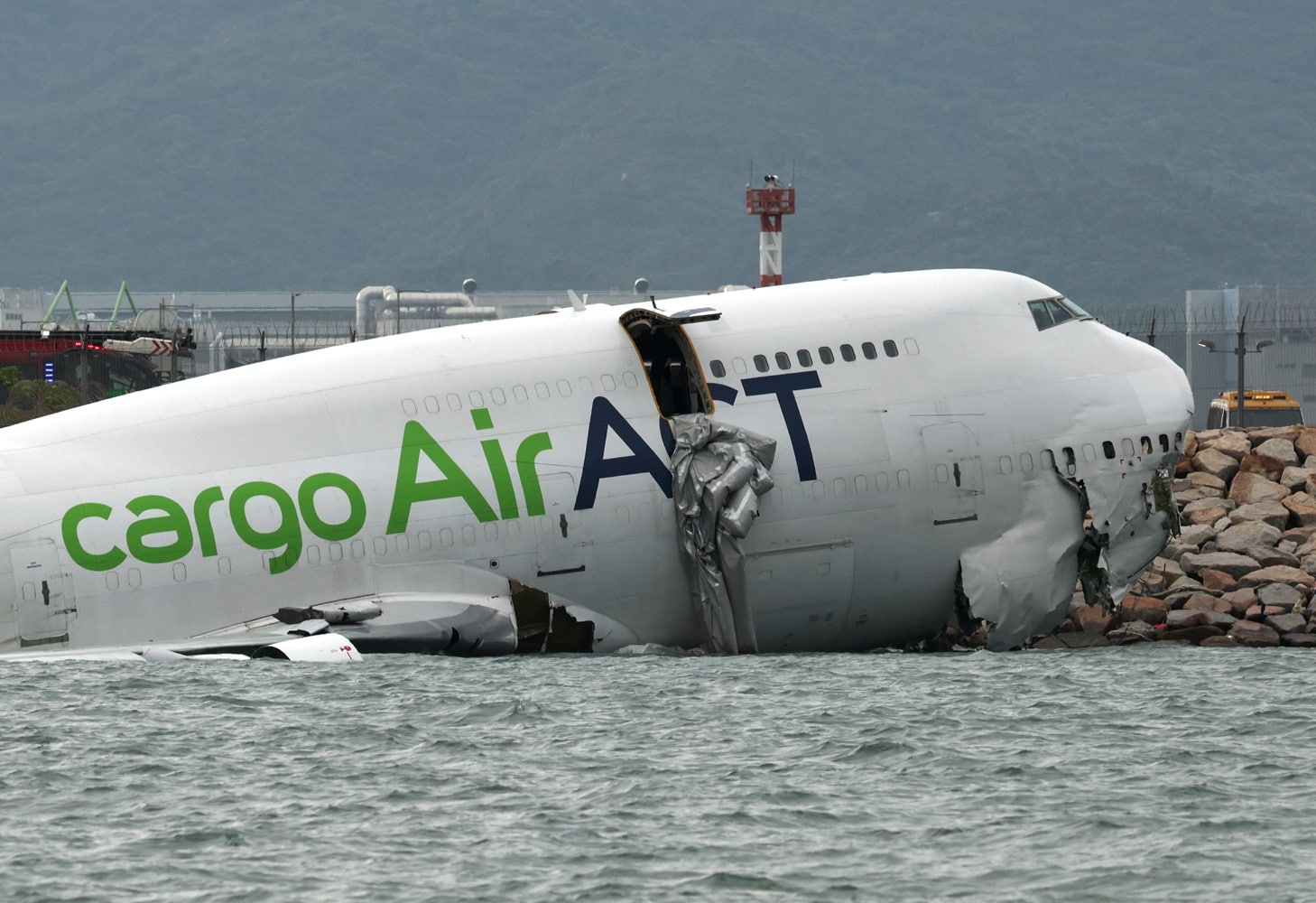World
Cargo Plane Crash at Hong Kong Airport Claims Two Lives

Two security personnel at Hong Kong International Airport tragically lost their lives early on October 20, 2025, when a cargo plane from Dubai skidded off the runway during landing. The aircraft, a Boeing 747 operated by Turkish carrier ACT Airlines for Emirates, veered off course and collided with their patrol vehicle, pushing it into the sea. All four crew members aboard the aircraft escaped unharmed.
The incident occurred at approximately 3:50 a.m. local time (1950 GMT on October 19) at one of the world’s busiest cargo hubs. This crash marks the deadliest airport accident in Hong Kong in over 25 years, raising serious concerns about airport safety protocols.
Details of the Incident
According to the city’s airport authority, the two security officers were discovered unconscious in the water after the crash. One was pronounced dead at the scene, while the other succumbed to injuries later at the hospital. Both officers had served at the airport for seven and twelve years, respectively.
Airport operations executive director Steven Yiu stated that the patrol vehicle was performing its regular duties outside the runway fence and had not entered the runway at the time of the incident. The aircraft unexpectedly veered left after landing on the north runway and struck the vehicle. “That wasn’t a normal path,” Yiu remarked.
Audio recordings from air traffic control, reviewed by Reuters, revealed that the pilot confirmed plans to land on runway 07L without reporting any technical difficulties. Shortly after, a controller indicated an “incident” had occurred on the airfield.
Investigation Underway
Man Ka-chai, chief accident and safety investigator for Hong Kong’s Air Accident Investigation Authority, noted that while the plane was directed to the north runway, no emergency message was received from the pilot prior to the crash. Photographs from the scene depicted the AirACT cargo plane partly submerged near the airport’s sea wall, with its fuselage damaged at both the nose and tail.
The Civil Aviation Department confirmed that the aircraft “deviated from the north runway after landing and ditched into the sea.” Fortunately, the flight, designated EK9788, was not carrying any cargo at the time of the accident. Flight tracking service FlightRadar24 indicated that the Boeing 747, which was 32 years old, had been converted from a passenger jet to a freighter.
Airport authorities have stated that operations were not significantly disrupted by the incident. The north runway is scheduled to reopen following safety inspections, while the south and central runways remain operational.
Investigators are currently examining various factors including weather conditions, runway surface, aircraft systems, and crew actions to determine what led to this tragic accident. This incident represents Hong Kong’s most severe airport accident since 1999 when a China Airlines flight crashed on landing, resulting in three fatalities.
As investigations continue, the aviation community will be closely monitoring the findings to enhance safety measures at airports globally.
-

 World5 months ago
World5 months agoSBI Announces QIP Floor Price at ₹811.05 Per Share
-

 Lifestyle5 months ago
Lifestyle5 months agoCept Unveils ₹3.1 Crore Urban Mobility Plan for Sustainable Growth
-

 Science4 months ago
Science4 months agoNew Blood Group Discovered in South Indian Woman at Rotary Centre
-

 World5 months ago
World5 months agoTorrential Rains Cause Flash Flooding in New York and New Jersey
-

 Top Stories5 months ago
Top Stories5 months agoKonkani Cultural Organisation to Host Pearl Jubilee in Abu Dhabi
-

 Sports4 months ago
Sports4 months agoBroad Advocates for Bowling Change Ahead of Final Test Against India
-

 Science5 months ago
Science5 months agoNothing Headphone 1 Review: A Bold Contender in Audio Design
-

 Top Stories5 months ago
Top Stories5 months agoAir India Crash Investigation Highlights Boeing Fuel Switch Concerns
-

 Business5 months ago
Business5 months agoIndian Stock Market Rebounds: Sensex and Nifty Rise After Four-Day Decline
-

 Sports4 months ago
Sports4 months agoCristian Totti Retires at 19: Pressure of Fame Takes Toll
-

 Politics5 months ago
Politics5 months agoAbandoned Doberman Finds New Home After Journey to Prague
-

 Top Stories5 months ago
Top Stories5 months agoPatna Bank Manager Abhishek Varun Found Dead in Well









